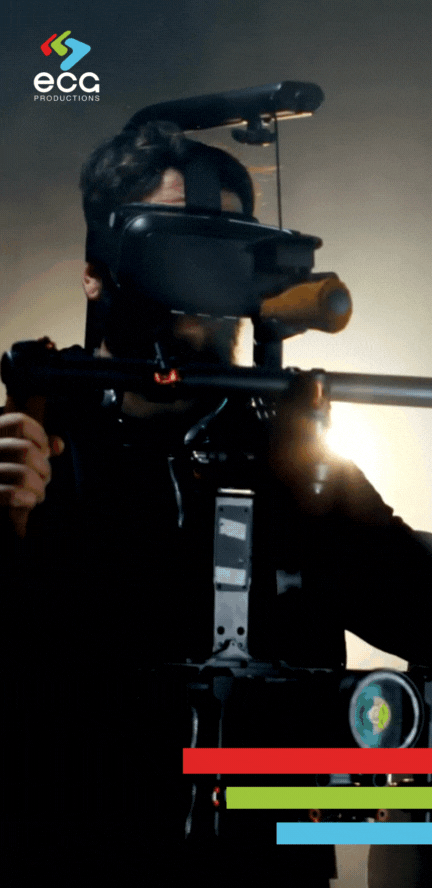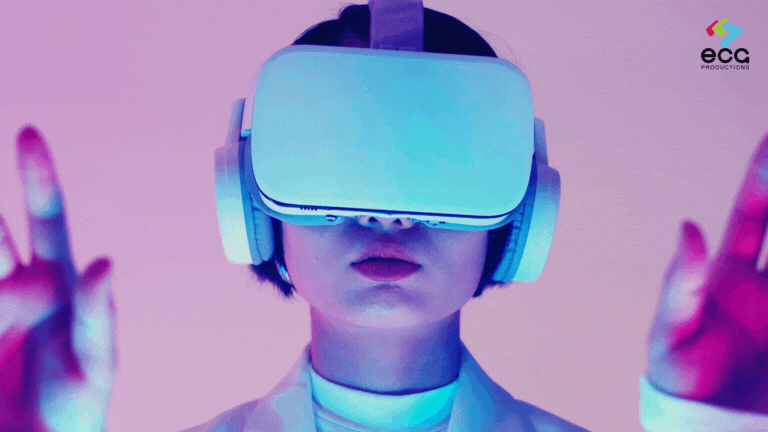- 1-855-787-4487
- info@ecgprod.com
- Mon - Fri: 10:00am - 6:30pm
Virtual reality isn’t the future of filmmaking—it’s the cutting edge of storytelling right now. As hardware becomes more accessible and content platforms expand, VR filmmaking is pushing the boundaries of how we tell stories, share experiences, and engage with audiences on a visceral level.
At ECG Productions, we’ve worked on VR projects across commercial, nonprofit, and educational sectors—and we’ve seen firsthand how this medium creates deeper emotional impact than traditional video ever could.
Here’s what you need to know about VR filmmaking, and why it’s worth paying attention to.
VR filmmaking refers to the process of creating immersive, 360-degree video content that allows viewers to experience a story from within. Unlike traditional film, where viewers watch from a fixed frame, VR places the audience inside the environment—giving them agency, perspective, and spatial awareness.
VR films are typically viewed through headsets like Meta Quest, HTC Vive, or Valve Index, though 360 videos can also be experienced on mobile or desktop (with limited immersion).
The rules are completely different. In traditional filmmaking, directors control what the viewer sees. In VR, the viewer chooses where to look. That changes everything.
Key differences:
No fixed frame: Everything around the viewer is “on camera” at all times
Limited editing cuts: Quick cuts can be jarring or disorienting
Immersive sound design: Audio must be spatially mixed to match the 360 environment
Blocking, not framing: Actors and objects must be placed and choreographed to guide attention organically


Captured with omnidirectional cameras, these are “look around” experiences that play like real-world documentary or event coverage. Ideal for:
Location-based storytelling
Virtual tours
Impact documentaries
Immersive brand content
Built with game engines like Unity or Unreal, these experiences let users move through environments, trigger events, and make choices. Ideal for:
Training simulations
VR games or branded entertainment
Experiential marketing
Mental health, empathy, or accessibility initiatives
Studies show that VR can create a greater sense of empathy, connection, and memory retention than flat-screen video. Why? Because viewers aren’t just watching—they’re inside the story.
In VR, the viewer is isolated from distractions. That means higher engagement and longer dwell time—a key metric for marketers and educators alike.
Want to show what it’s like to walk through a refugee camp, explore a historic site, or be in the middle of a concert crowd? VR filmmaking lets you deliver the experience, not just describe it.

From surgical simulations to soft-skill training, VR helps people learn faster and retain more by replicating real-life situations in a safe environment.
VR has been used by organizations like the UN and charity: water to immerse donors in the field—dramatically increasing empathy and support.
Use VR to onboard new employees, showcase facilities, or deliver high-impact executive messaging.
Want your brand activation to be unforgettable? VR activations at events and retail spaces draw crowds, capture attention, and go viral.
Yes, it’s powerful—but VR production comes with challenges:
Tech complexity: Requires specialized cameras, stitching software, and headset testing
Creative adaptation: Writers and directors must rethink traditional structure
Hardware accessibility: Not everyone owns a headset
How ECG solves this:
We provide full-service VR video production—from scripting and live-action capture to stitching, editing, spatial audio mixing, and headset deployment strategy. Whether you’re building an internal tool or launching a branded campaign, we guide the process from concept to consumer.
VR filmmaking isn’t a gimmick—it’s a storytelling revolution. It challenges creators to think differently. It forces brands to be bolder. And when done right, it delivers an emotional punch that traditional media can’t match.
At ECG Productions, we’re here to help you take that leap—from flat screens to fully immersive storytelling.
Want to explore what VR filmmaking could do for your brand, campaign, or audience?
Let’s talk. We’ll help you build something immersive, strategic, and unforgettable.

CONTACT US
LET'S GET IN TOUCH
1-855 787-4487
Mon – Fri 9:00 AM – 6:00 PM EST
120 Interstate N Pkwy E SE #226
Atlanta, GA 30339
info@ecgprod.com